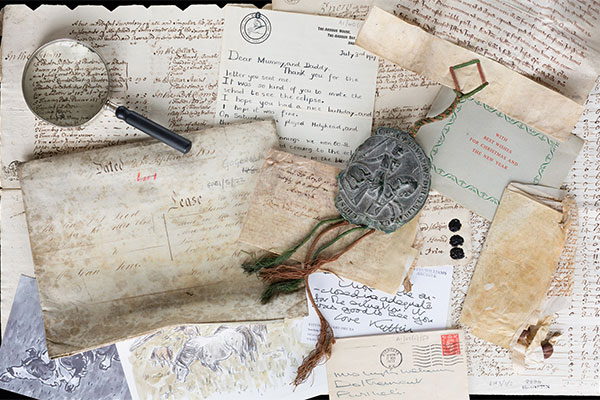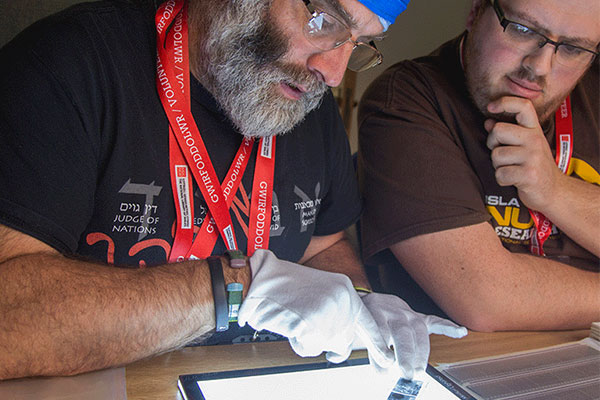The history of the Black Book of Basingwerk
The history of the manuscript immediately after the dissolution of the abbey in 1536 is not known, but by about 1630, according to a note by Robert Vaughan of Hengwrt (in NLW MS 5262A, ff. 27v, 66v), it was in the hands of Huw Lewys Dafydd of Llanasa, Flintshire; Vaughan's two notes in the volume (pp. 300, 308) date from this time. John Jones (c. 1585-1657/8), Gellilyfdy, made a copy of it (now Peniarth MS 264) while he was at the Fleet Prison, London, in 1635-6, probably adding the page numbers at the same time. Among the later owners were Thomas Jones of Cricin, Rhuddlan, who wrote his pedigree on p. iv in 1663 and Foulke Owen of Nantglyn, Denbighshire, who left his name on pp. iii and iv, in 1686, and probably bequeathed the manuscript to his nephew Foulke Jones, whose name with the date 1692 appears on p. iii. By about 1700 it had been acquired by the antiquary John Griffith (1678-1763) of Cae Cyriog near Wrexham, who added a number of notes to the volume. The manuscript remained in the possession of his family until his descendant, Montague C. Ll. Griffith of Cae Cyriog deposited it at the National Library of Wales, which purchased the volume following his death in 1933.




